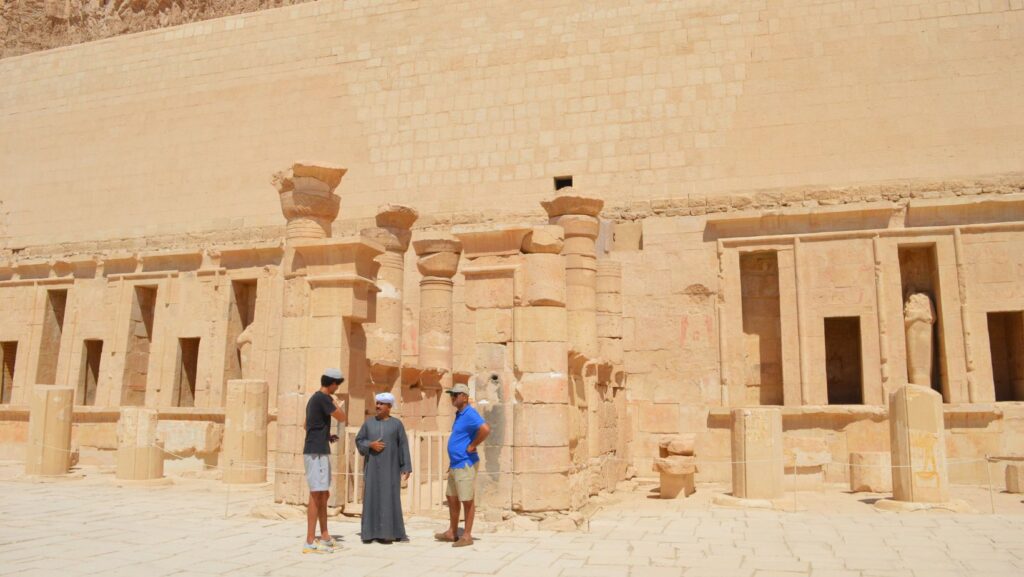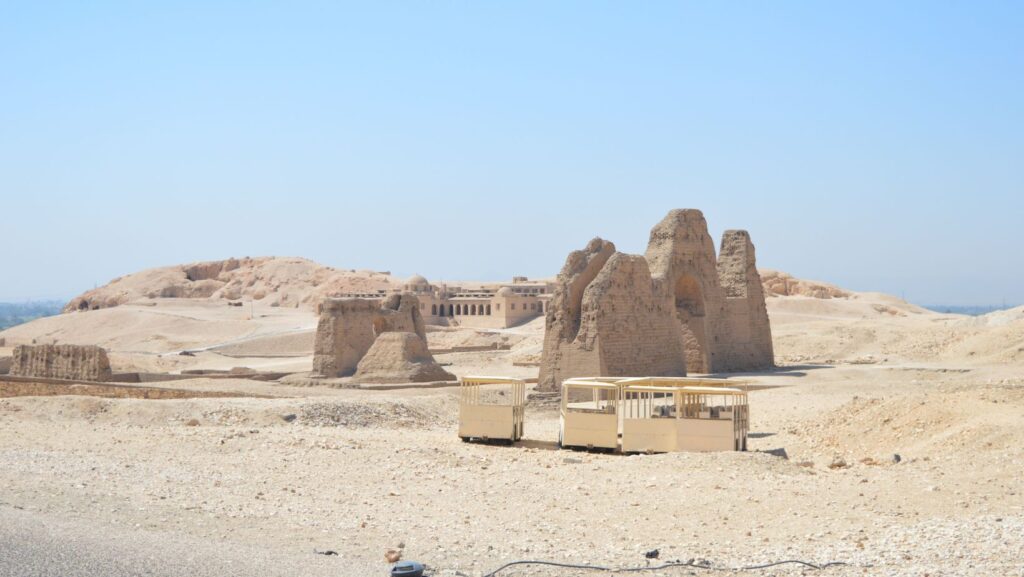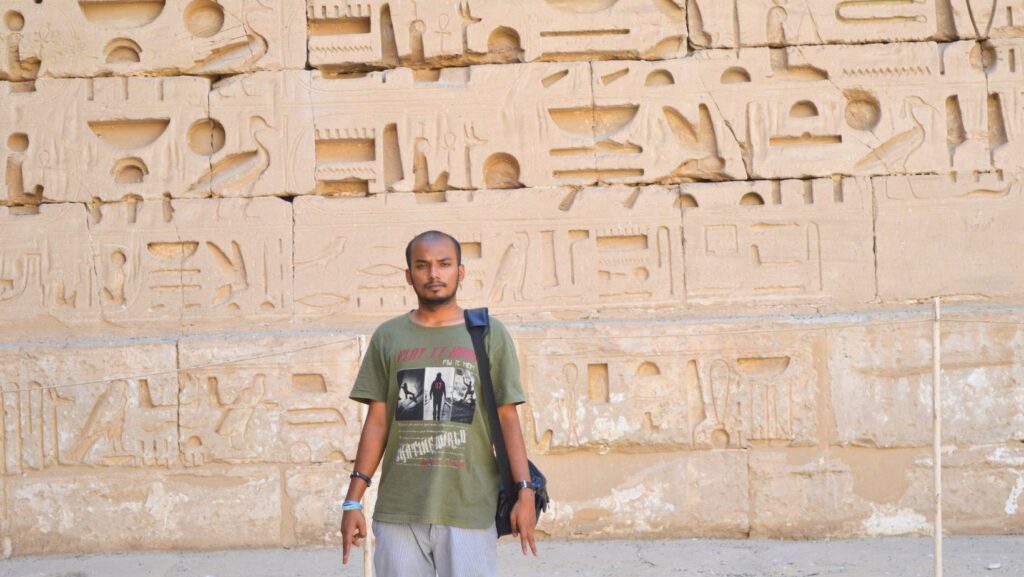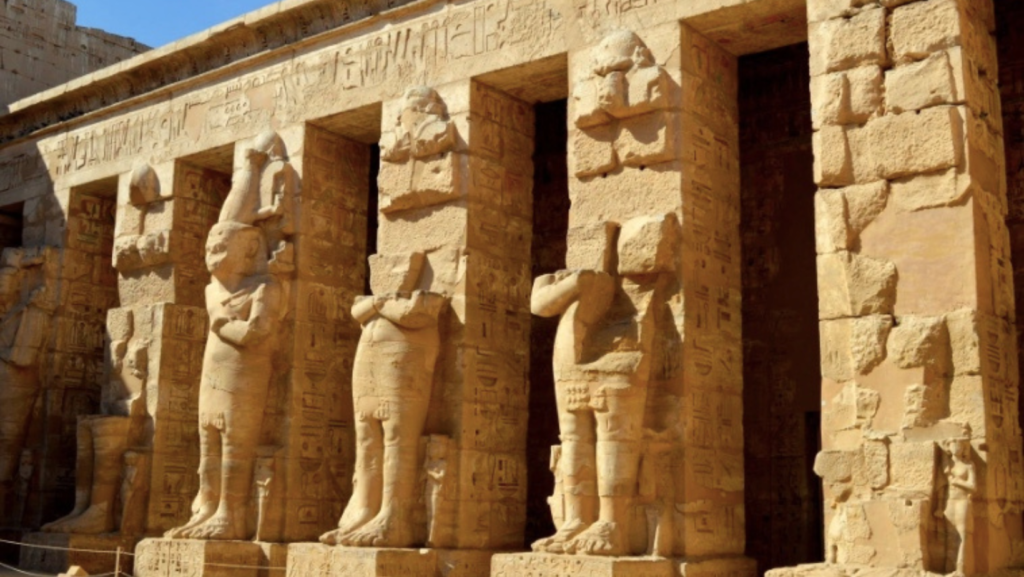Luxor, situated in central Egypt along the Nile River, is a treasure trove of ancient and modern Egyptian culture. Known as the site of Ancient Thebes, Luxor offers travelers a remarkable experience with its awe-inspiring monuments, unique landscapes, and rich heritage. The city’s mix of ancient temples and vibrant modernity makes it a must-visit destination for history enthusiasts and explorers alike.
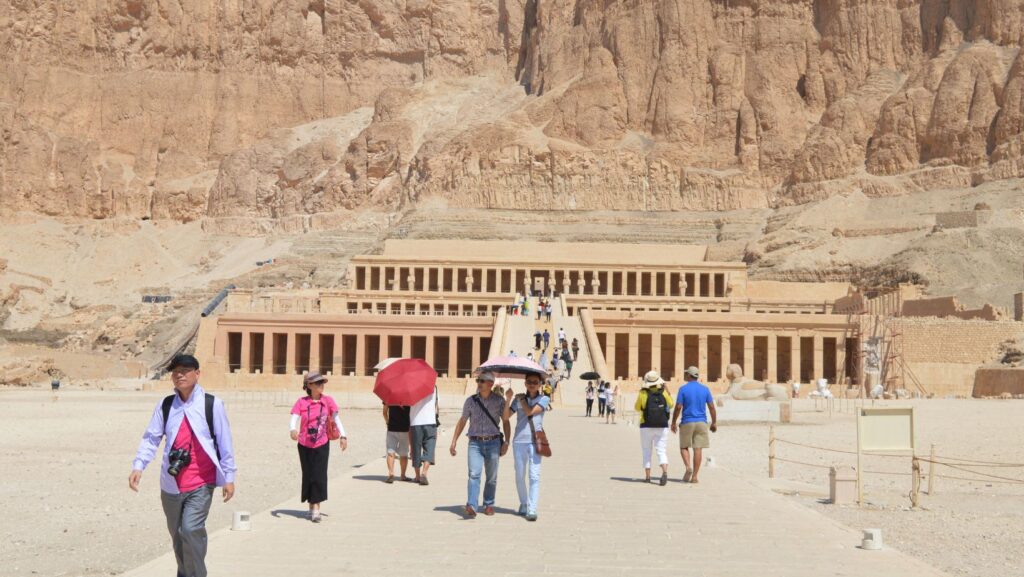
“He Travels Alone, He Travels Fastest.”
Main Attractions of Luxor, Egypt
1. Temple of Karnak
The Temple of Karnak, located a few miles from modern Luxor on the east bank of the Nile, stands as the largest religious temple complex ever built. Spanning over 250 acres, this architectural marvel was dedicated to the Theban triad of deities: Amun, Mut, and Khonsu.

The central area honors Amun-Ra, the revered male god of Thebes, while the southern and northern areas are dedicated to his wife Mut and son Khonsu, respectively. Notably, the destroyed eastern section was devoted to the Aten, the sun disk.
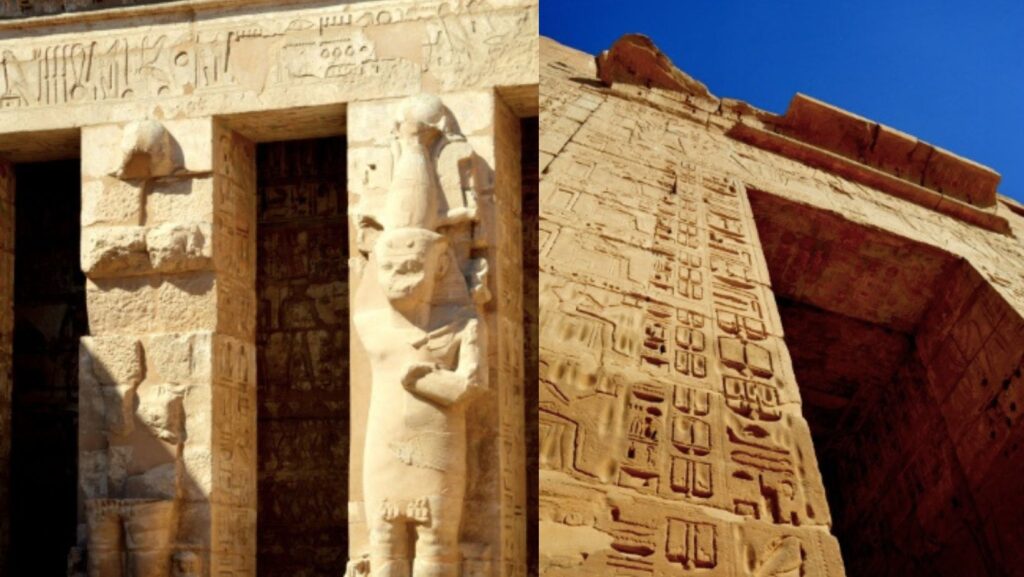
The highlight of Karnak is its Hypostyle Hall, featuring 134 towering columns that cover an area of over 50,000 sq. ft., making it one of the greatest architectural feats of ancient Egypt. A visit to the Temple of Karnak offers an unforgettable glimpse into the grandeur of Egypt’s ancient religious practices.
2. Luxor Temple
The Luxor Temple, located on the east bank of the Nile, was constructed around 1400 BCE and is one of the best-preserved ancient monuments in Egypt. Dedicated to the triad of Amun, Mut, and Khonsu, the temple’s remarkable carvings and sandstone blocks from Nubia make it a standout site.
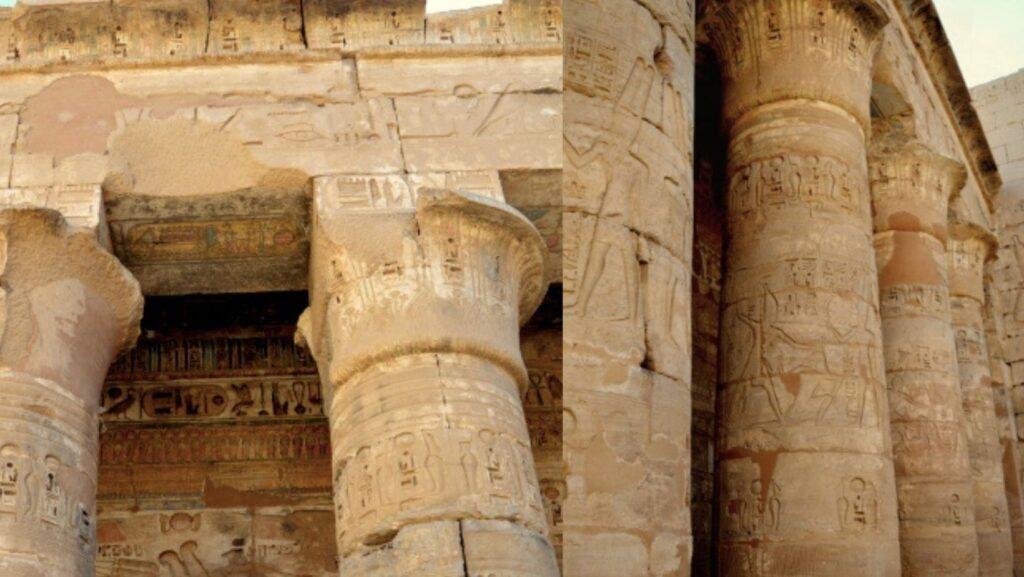
This temple symbolizes the connection between the world of humans and the divine. It also played a central role in ancient Egypt’s Annual Opet Festival, a celebration of fertility and renewal. Over time, the Luxor Temple has served various religious purposes, including the construction of a Christian church and the Mosque of Abu el-Haggag, which remains active to this day.
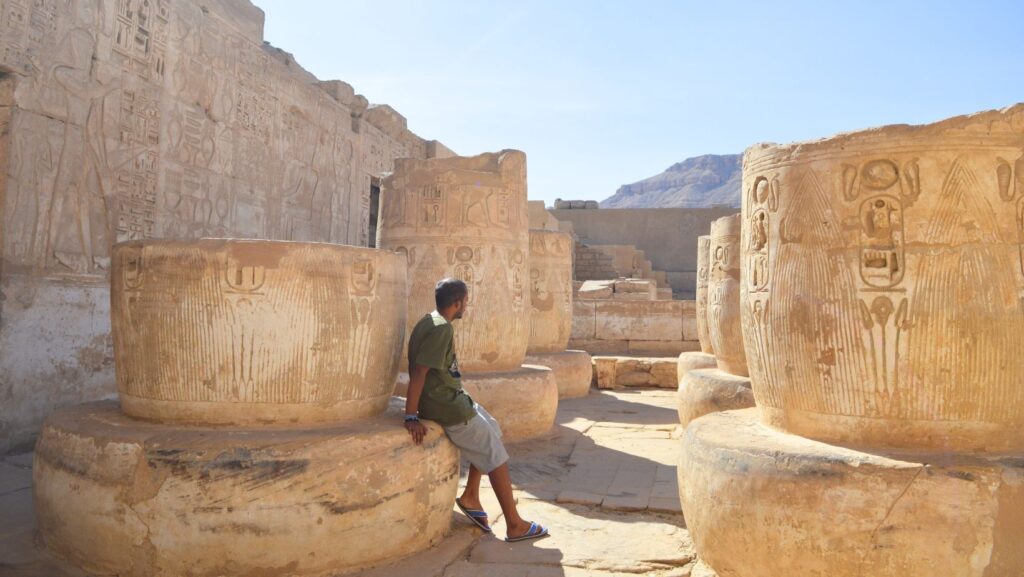
3. Colossi of Memnon
On Luxor’s west bank stand the Colossi of Memnon, two enormous stone statues of Pharaoh Amenhotep III. These statues once guarded the entrance to the king’s mortuary temple.
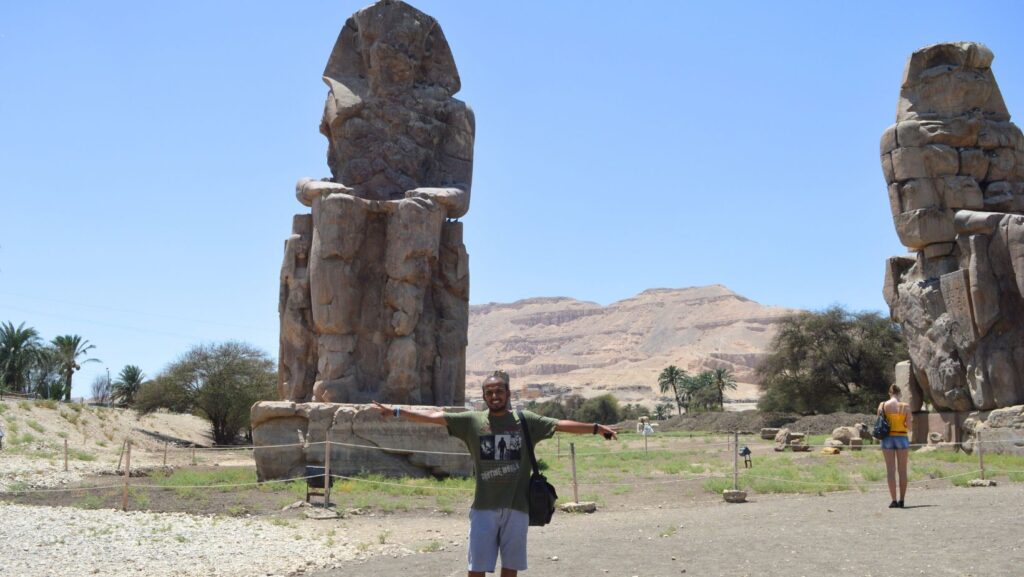
Despite damage caused by earthquakes and time, the statues remain impressive. Interestingly, the statues were once known for producing a bell-like sound during sunrise, caused by temperature changes and humidity. These colossal guardians continue to attract visitors with their historical significance and enduring grandeur.
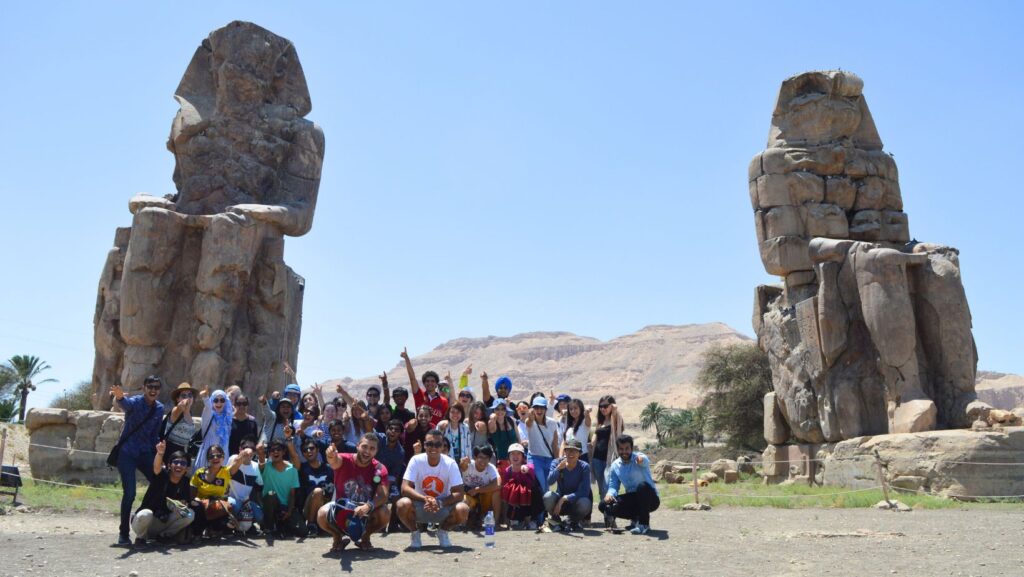
4. Ramesseum – The Mortuary Temple of Ramses II
The Ramesseum, located in the Theban Necropolis on Luxor’s west bank, is the mortuary temple of Ramses II. Following the architectural style of the New Kingdom, this temple remains a testament to Ramses II’s legacy.

Although many of its structures are now in ruins, visitors can still admire its massive buildings, storage rooms, and impressive statues. The temple inspired the famous poem “Ozymandias” by Percy Bysshe Shelley, further cementing its place in cultural history.
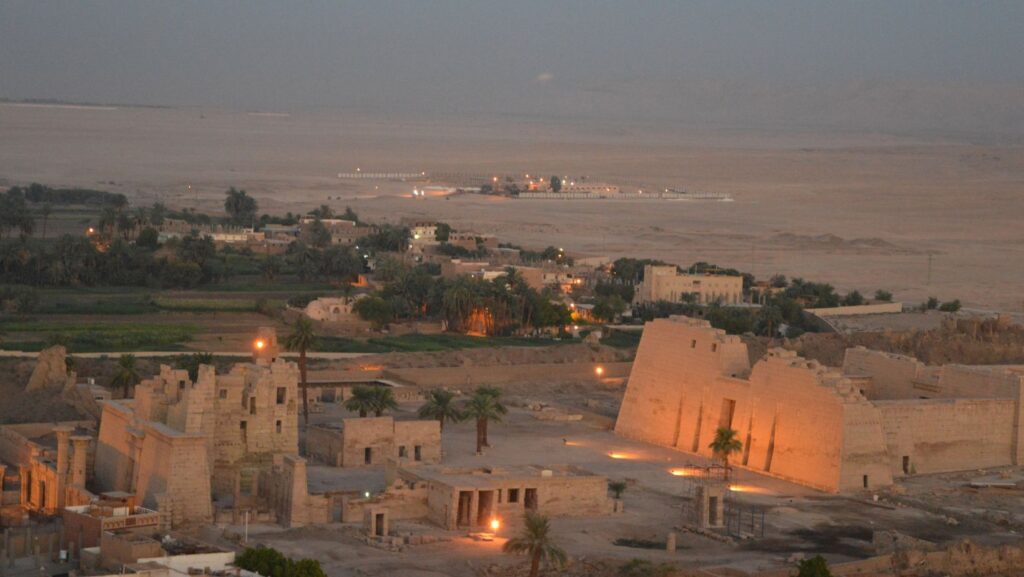
5. Luxor Museum
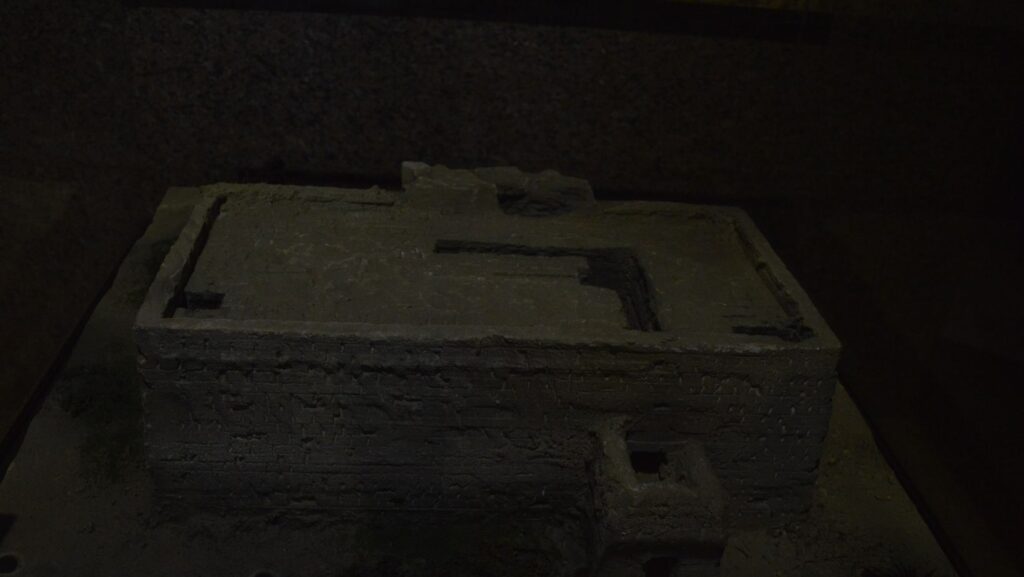
The Luxor Museum, situated between the Karnak Temple and the Luxor Temple, offers a curated collection of ancient artifacts and art. Although smaller than Cairo’s Egyptian Museum, it boasts exquisite displays, including treasures from Tutankhamun’s tomb, mummies of Pharaohs, pottery, jewelry, and statues.
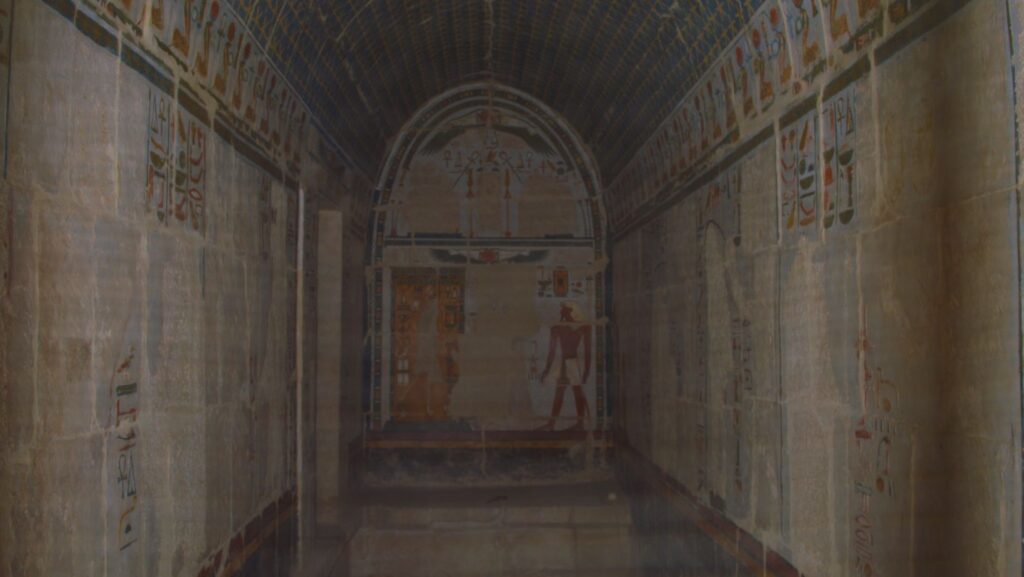
Each exhibit is meticulously documented in Arabic and English, making it an enriching experience for visitors. This museum provides a closer look at the daily lives of ancient Egyptians while showcasing their artistic and cultural achievements.
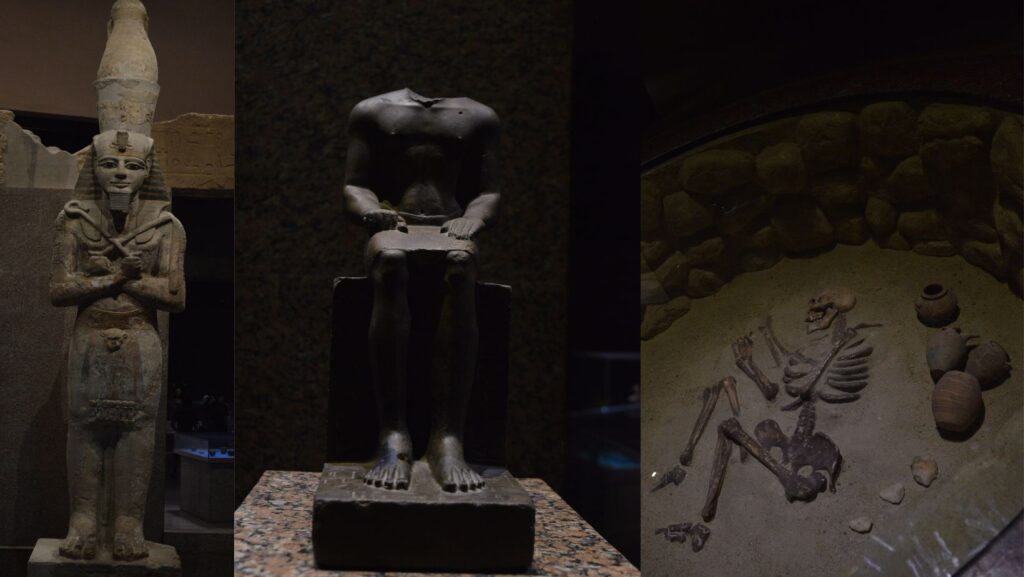
“We Travel Not to Escape, But to Explore the Unknown.”
Plan Your Visit to Luxor
Luxor’s unique blend of ancient history, architectural grandeur, and cultural richness makes it an essential stop on any Egyptian adventure. Whether it’s marveling at the Temple of Karnak, wandering through the Luxor Museum, or admiring the timeless Colossi of Memnon, Luxor promises an unforgettable journey into the past.

Stay Connected
Read more travel stories and tips @Chasing LifeStories!
Check out my recent photos here @Roshan Dibya Ranjan
